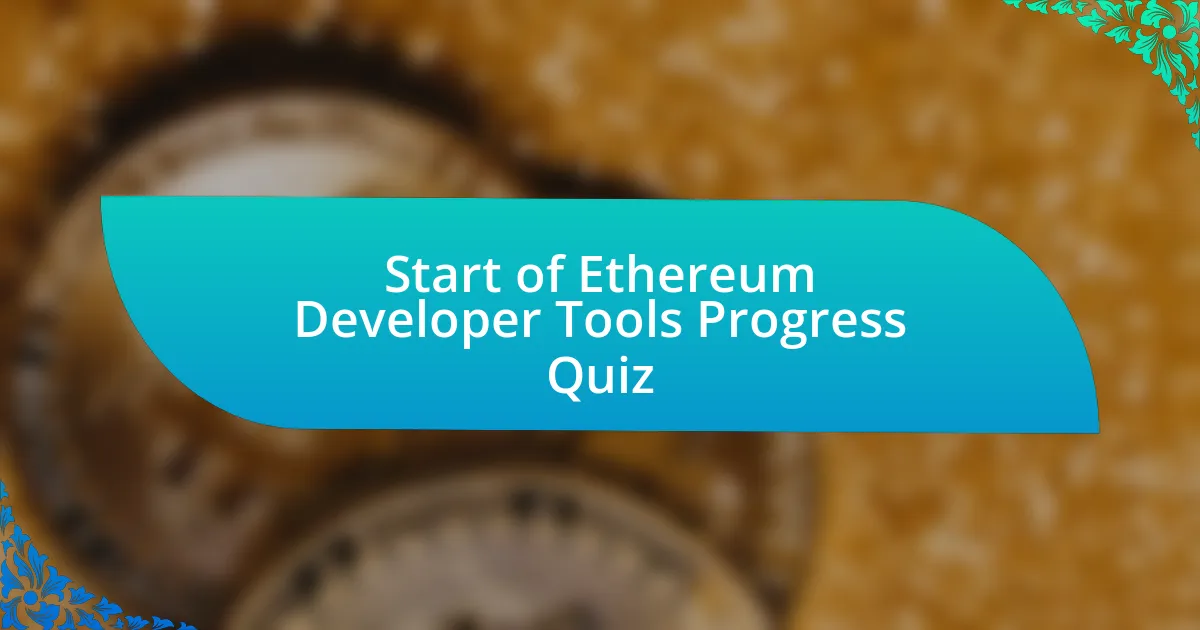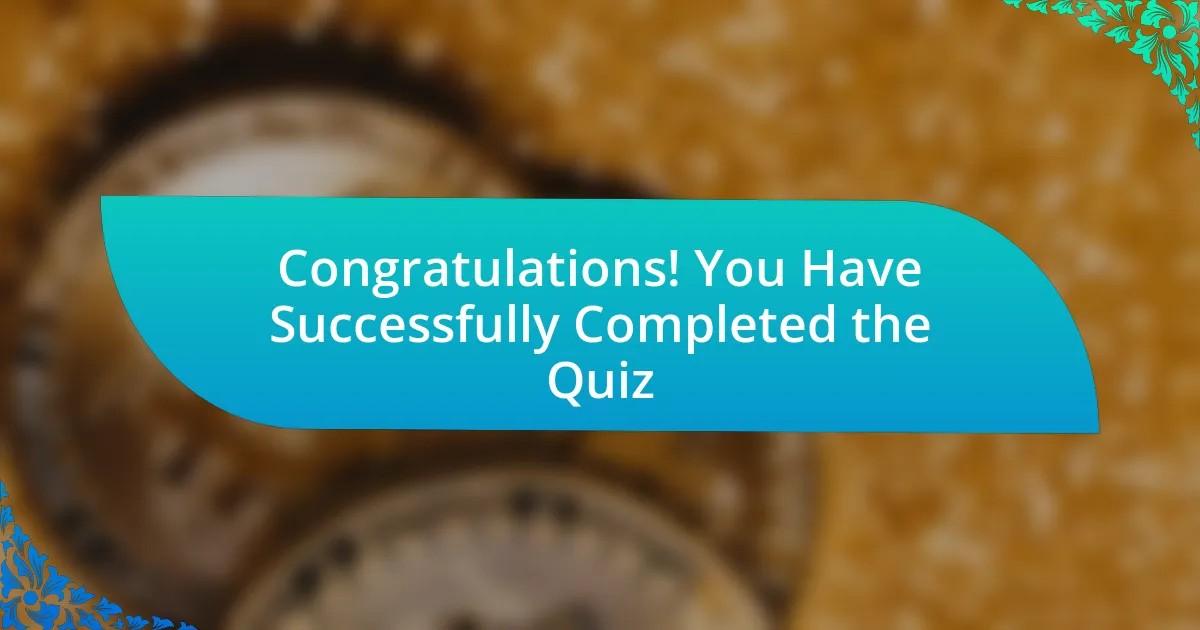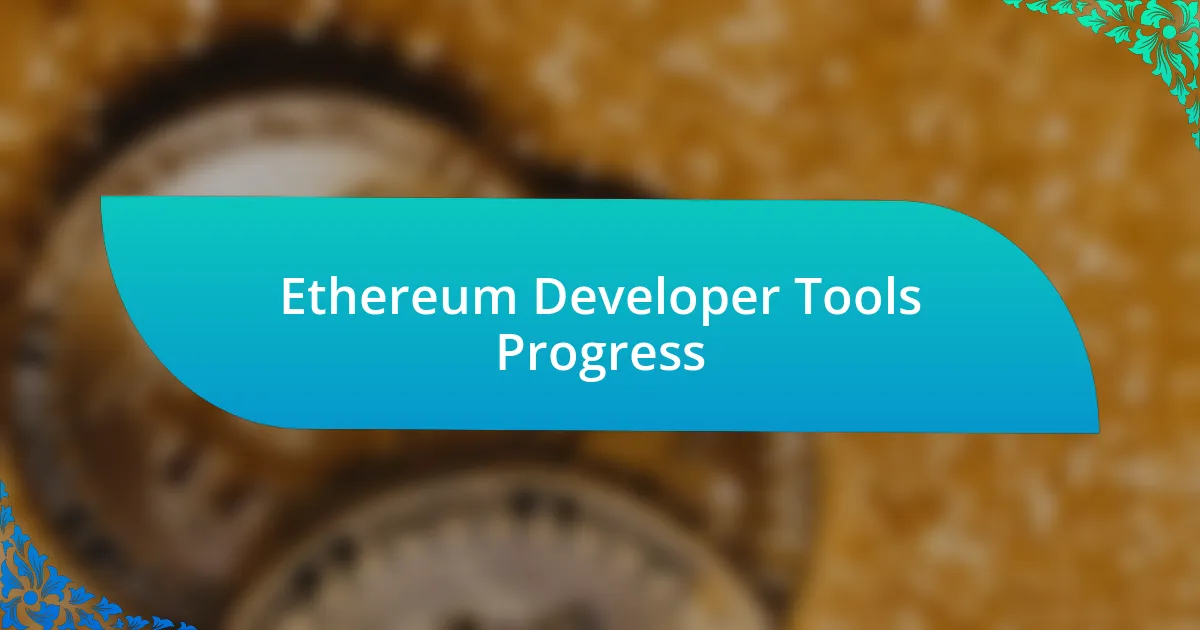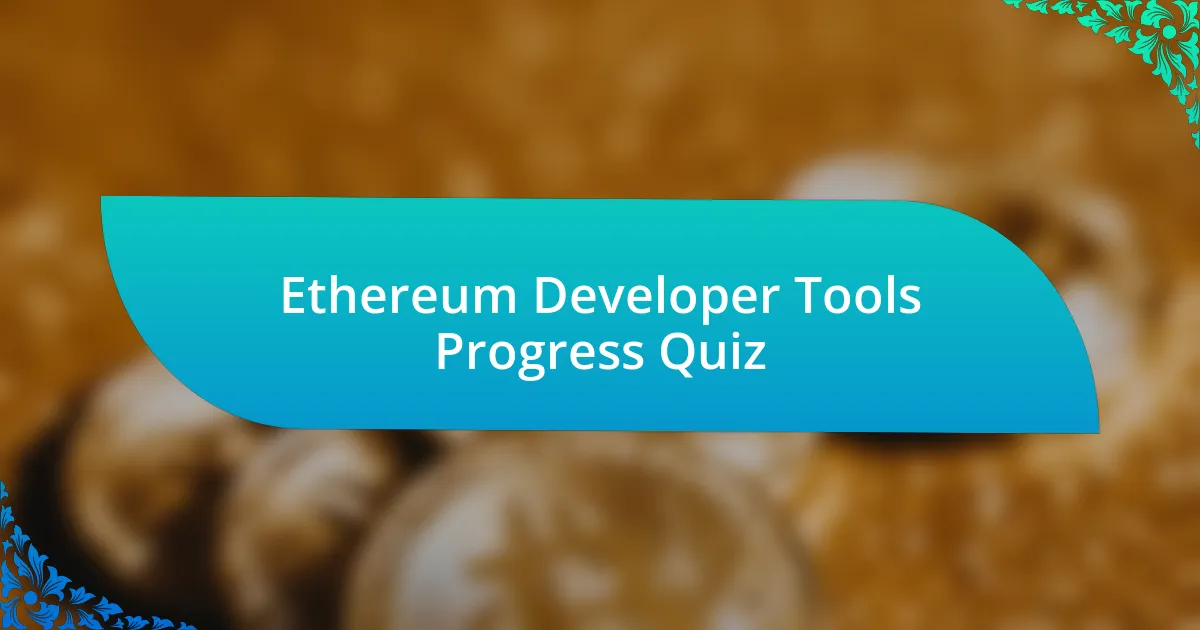
Start of Ethereum Developer Tools Progress Quiz
1. What is the primary scripting language used for Ethereum smart contracts?
- Solidity
- JavaScript
- Python
- C++
2. What is the purpose of the JSON-RPC API in Ethereum development?
- It stores all permanent records of transactions on the network.
- It manages user accounts and permissions on the blockchain.
- It provides a uniform set of methods for interacting with the Ethereum blockchain.
- It conducts transaction validation and consensus across nodes.
3. Which API abstracts away the complexity of Ethereum’s client protocols?
- Alchemy API
- Infura API
- Web3 API
- Ethers API
4. What does Infura offer as a service?
- Bitcoin Mining as a Service.
- Ethereum API as a service.
- NFT Marketplace as a Service.
- Cloud Storage as a Service.
5. What is Truffle Suite used for in Ethereum development?
- It is a tool for mining Ethereum and providing computational power.
- It is a library for writing Solidity smart contracts in JavaScript.
- It is an exchange platform for trading Ethereum-based tokens.
- It provides a suite of tools for smart contract development, including a development blockchain, testing framework, and asset pipeline.
6. What is Remix IDE used for?
- It creates graphics and animations for Ethereum games.
- It is a mining software for Ethereum coins.
- It compiles and runs Java applications on the blockchain.
- It is used to write, test, and deploy Solidity smart contracts.
7. What is Ganache used for in Ethereum development?
- It provides a user interface for monitoring on-chain transactions.
- It compiles smart contracts into machine code for the blockchain.
- It facilitates the management of public Ethereum nodes.
- It creates a local Ethereum blockchain environment for testing smart contracts.
8. What is Hardhat used for in Ethereum development?
- It is a blockchain network for trading cryptocurrencies securely.
- It is a marketplace for buying and selling smart contracts.
- It is a development environment that allows developers to create, test, and deploy DApps with flexibility and robustness.
- It is a wallet service for storing Ethereum tokens.
9. What is Web3.js used for?
- It creates mobile applications for iOS and Android.
- It provides tools for creating transactions, signing messages, and interacting with the Ethereum network.
- It enables high-speed data processing for web applications.
- It is a framework for designing user interfaces.
10. What is Ethers.js used for?
- It is a collection of JavaScript libraries for interacting with the Ethereum network.
- It is a framework for building mobile applications on Ethereum.
- It is an API for creating Bitcoin transactions.
- It is a tool for managing Ethereum wallets offline.
11. What is Brownie used for?
- It is a decentralized marketplace for NFT trading.
- It is a Java framework for building web applications.
- It is a browser extension for managing Ethereum wallets.
- It is a Python-based development framework specifically designed for Ethereum smart contracts.
12. What is the main advantage of using Truffle Suite?
- It is designed only for developing mobile applications.
- It combines multiple tools in one framework, making it easier for developers.
- It provides an educational platform for blockchain beginners.
- It focuses solely on Ethereum token creation and management.
13. What is the main disadvantage of using Truffle Suite?
- It can be complex for beginners due to its rich feature set.
- It lacks compatibility with Solidity.
- It has no support for testing frameworks.
- It is only available for Windows users.
14. What is the main advantage of using Hardhat?
- It is highly customizable and provides excellent debugging tools.
- It simplifies all Ethereum transactions into one command.
- It has a built-in cryptocurrency wallet with low fees.
- It is exclusively for creating non-fungible tokens (NFTs).
15. What is the main disadvantage of using Hardhat?
- It has a steeper learning curve compared to simpler tools.
- It lacks community support and documentation.
- It does not integrate with popular libraries.
- It is exclusively for advanced developers only.
16. What is the purpose of the EVM (Ethereum Virtual Machine)?
- It is a graphical interface for managing transactions.
- It is a new cryptocurrency for trading on exchanges.
- It is a centralized server for storing Ethereum contracts.
- It is a decentralized virtual machine capable of handling scripts using the public nodes network.
17. What is the value token for Ethereum?
- Ether (ETH)
- Ripple (XRP)
- Bitcoin (BTC)
- Litecoin (LTC)
18. What is the function of the Testnet in Ethereum development?
- It is designed for carrying out real transactions with Ether.
- It is used to connect to the Ropsten Network for testing purposes.
- It allows for the creation of production-ready smart contracts.
- It ensures the security of the Ethereum mainnet.
19. Do you need to use real Ether to test DApps and smart contracts?
- Yes, you must buy Ether to test smart contracts.
- Yes, real Ether is necessary for testing DApps.
- No, test networks do not allow testing without Ether.
- No, free Ether can be used in test networks.
20. What happens when the gas runs out without the transaction being complete?
- All changes are reverted, and gas is paid to the miner.
- The gas fee is refunded to the sender.
- The transaction is automatically resubmitted.
- The transaction is completed without any issues.
21. What is the primary benefit of using a private network in Ethereum development?
- It automatically audits contracts for security vulnerabilities.
- It enhances transaction speed and reduces fees.
- It provides access to a larger network of users.
- It is useful for data privacy and permissions testing and control.
22. What is the purpose of the OpenZeppelin SDK?
- It allows for the creation of new blockchain protocols from scratch.
- It provides an interface for user authentication in decentralized apps.
- It helps develop, compile, upgrade, deploy, and interact with smart contracts.
- It manages cryptocurrency wallets for secure transactions.
23. What is the purpose of the sbt-ethereum tool?
- It is a mobile application for trading Ethereum coins.
- It converts Ethereum transactions into traditional bank transactions.
- It generates random smart contracts automatically without user input.
- It provides a tab-completey, text-based console for smart-contract interaction and development.
24. What is the purpose of the Cobra framework?
- It is a complex architecture for blockchain scalability and privacy.
- It is an interface for managing Ethereum transactions manually.
- It is a library for creating decentralized finance applications.
- It is a fast, flexible, and simple development environment framework for Ethereum smart contract testing and deployment.
25. What is the purpose of the Epirus framework?
- It is a Python framework for building decentralized apps.
- It is a C++ framework for creating Ethereum wallets.
- It is a Java framework for building smart contracts.
- It is a Ruby framework for developing blockchain games.
26. What is the purpose of the Etherspot SDK?
- It is used exclusively for building games on the blockchain.
- It creates decentralized applications solely for Ethereum.
- It serves as a basic cryptocurrency wallet without smart contract support.
- It supports most of the EVM-compatible chains and is a multi-chain smart wallet SDK.
27. What is the purpose of the Ambire Login SDK?
- It is a framework for creating Ethereum dApps only.
- It is a smart wallet SDK focused on onboarding via email and supports popular EVM chains.
- It is a blockchain mining tool for Ethereum.
- It is a security protocol for smart contracts.
28. What is the purpose of the Tatum SDK?
- It is a wallet application for managing cryptocurrency assets.
- It is a programming language specifically for writing smart contracts.
- It is a powerful, feature-rich TypeScript/JavaScript library that streamlines the development of blockchain applications.
- It is a database for storing and querying blockchain data.
29. What are some pre-built contract templates available for smart contract development?
- Simple Java app templates for generic applications.
- Pre-audited, robust smart contract templates available via thirdweb Explore.
- Pre-installed Word document templates for office use.
- Basic HTML contract templates for web development.
30. What are some benefits of using pre-built contract templates?
- They increase the overall gas fees incurred during transactions.
- They limit the functionality of smart contracts significantly.
- They require extensive manual coding for adjustments and updates.
- They help avoid deploying contracts with easily avoidable bugs and reduce redeployment costs.

Congratulations! You Have Successfully Completed the Quiz
Thank you for participating in our quiz on ‘Ethereum Developer Tools Progress.’ We hope you found the experience enjoyable and informative. This quiz covered crucial aspects of Ethereum’s development environment. You may have learned about popular tools, frameworks, and the evolution of these resources. Understanding these tools is vital for anyone looking to build on the Ethereum platform.
Each question was designed to challenge your knowledge and expand your understanding. Whether you are a beginner or an experienced developer, engaging with the material can reinforce your skills. You should now have a clearer grasp of how various tools can enhance your Ethereum projects and streamline your development process.
We invite you to explore the next section on this page. Here, you will find more in-depth information about ‘Ethereum Developer Tools Progress.’ This additional content will help you deepen your knowledge and stay updated on the latest developments in the Ethereum ecosystem. Your path to becoming a proficient Ethereum developer continues here!

Ethereum Developer Tools Progress
Overview of Ethereum Developer Tools
Ethereum developer tools comprise software designed to assist developers in building and managing decentralized applications (dApps) on the Ethereum blockchain. These tools facilitate tasks such as smart contract development, testing, and deployment. Popular tools include development environments, testing frameworks, and interactive consoles that streamline the development process and enhance productivity.
Evolution of Ethereum Developer Tools
The evolution of Ethereum developer tools reflects the growing complexity of blockchain applications. Initially, tools like Remix and Truffle focused on basic smart contract development. As the Ethereum ecosystem matured, more sophisticated tools emerged, such as Hardhat, which offers integrated testing and debugging features, and Foundry, which emphasizes speed and efficiency in dApp development.
Current Popular Ethereum Developer Tools
Current popular tools in the Ethereum developer ecosystem include Remix, Truffle, Hardhat, and Brownie. Remix is a web-based IDE that allows for instant smart contract testing. Truffle provides a comprehensive development framework with built-in smart contract compilation, deployment, and testing. Hardhat streamlines tasks and enhances debugging capabilities, while Brownie is tailored for Python developers, offering robust testing and scripting features.
Challenges in Ethereum Developer Tools Development
Challenges in developing Ethereum tools stem from rapid protocol changes, security vulnerabilities, and developer experience. Maintaining compatibility with the Ethereum network’s evolving nature requires constant updates. Security concerns are paramount, as vulnerabilities in smart contracts can lead to significant financial losses. Additionally, enhancing user experience for developers of varying skill levels remains critical.
Future Trends in Ethereum Developer Tools
Future trends in Ethereum developer tools point towards greater integration with Artificial Intelligence (AI) and Machine Learning (ML) to enhance coding efficiency. Improvements in security features will become essential as decentralized finance (DeFi) applications grow. Furthermore, the rise of cross-chain interoperability tools indicates a shift towards broader ecosystem support, enabling developers to build more versatile applications.
What are Ethereum developer tools?
Ethereum developer tools are software packages and frameworks that aid developers in creating, testing, and deploying applications on the Ethereum blockchain. These tools include IDEs like Remix, frameworks like Truffle and Hardhat, and libraries like Web3.js. They facilitate easier interaction with smart contracts and provide debugging capabilities, enhancing the development process.
How has the progress of Ethereum developer tools evolved?
The progress of Ethereum developer tools has significantly advanced since the blockchain’s inception in 2015. Initially, tools were limited, focusing on basic smart contract development. Today, the ecosystem boasts mature frameworks, enhanced security features, and improved user interfaces. Innovations have come from collaborative efforts in the community, leading to a more robust and accessible development environment.
Where can developers find Ethereum developer tools?
Developers can find Ethereum developer tools on various online platforms, including GitHub, where most tools are open source. Official websites of tools like Truffle, Hardhat, and Remix also provide downloads and documentation. Additionally, community forums and tutorials offer insights into the use and integration of these tools.
When were major Ethereum developer tools released?
Major Ethereum developer tools were released at different times, marking significant milestones in the ecosystem. Truffle was first released in 2015, Hardhat in 2018, and Remix saw early iterations from 2015 as well. Each tool’s release contributed to the growing maturity and capabilities of Ethereum development.
Who contributes to the development of Ethereum developer tools?
The development of Ethereum developer tools is primarily contributed by independent developers, teams at blockchain companies, and open-source contributors. Organizations like ConsenSys and the Ethereum Foundation play an influential role by funding and supporting these projects, fostering innovation within the community.

